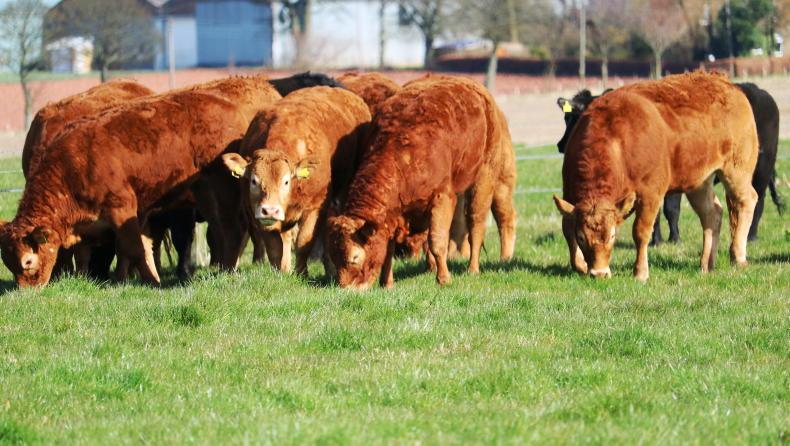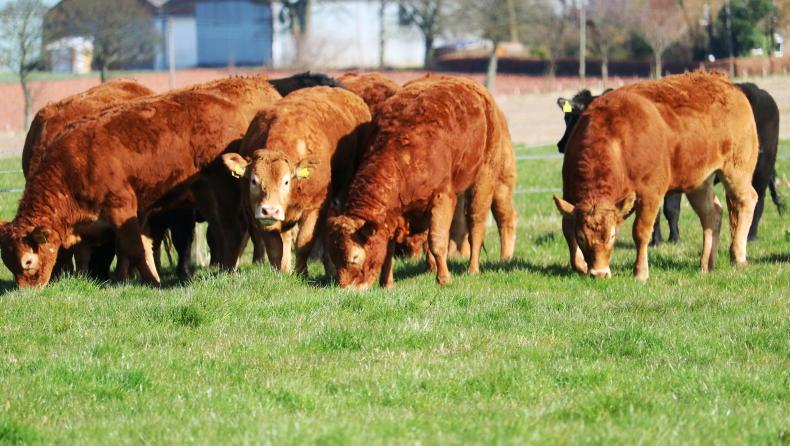Milder temperatures and settled conditions will see grass growth slowly increasing. How quickly growth rates increase will depend on soil fertility and when fertiliser was applied.
As grass covers start to build, there will be an opportunity to filter cattle outside, get grazing back on track and relieve the pressure on sheds.
Outlined are five tips to get the grazing rotation up and running in mid-April.
1. Apply fertiliser
March was an exceptionally wet month and ground conditions were poor, leading most farmers to halt any fertiliser applications.
But with more settled conditions, ground should improve and allow farmers to get nitrogen spread on grazing swards.
Apply 25 to 30 units/acre of nitrogen, ideally with five to 10 units/acre of sulphur to drive grass growth over the rest of April.
2. Turning cattle out
Wet conditions during March have delayed plans for turning stock out to grass. As ground improves, filtering stock outdoors will become possible again.
Start with light stores and weanlings. Maiden heifers that will go to the bull this summer should be top priority.
If first-calved heifers and cows with twins are under pressure in the shed, give them priority for grazing also. As ground dries out and grass covers build, more stock can be filtered out of sheds.
3. Setting up paddocks
At turnout time, it is better to start with bigger paddocks and allow animals to settle at grass first.
Temporary electric fences should be erected the day after turnout, as cattle are likely to break through such wires as they hit grass.
Paddock size can be reduced once you are confident grass is growing and there is enough cover available for a one-, two- or three-day allocation.
4. Use a back fence
Use a back fence on areas that have been tightly grazed and this ground is still soft. Back fencing will protect grazed areas from poaching and allow regrowth to materialise.
5. Walking the farm weekly
Ideally, walk the grazing areas at least once per week. Twice weekly is better, with paddocks assessed on Monday and Friday.
This will give a better handle of how grass covers are building and whether ground is drying out. With this info, you can speed up or slow down the number of animals leaving the sheds and hitting grass.
Read more
Surprise OPEC move means diesel unlikely to get much cheaper
Dairy management: important week for fertiliser
Milder temperatures and settled conditions will see grass growth slowly increasing. How quickly growth rates increase will depend on soil fertility and when fertiliser was applied.
As grass covers start to build, there will be an opportunity to filter cattle outside, get grazing back on track and relieve the pressure on sheds.
Outlined are five tips to get the grazing rotation up and running in mid-April.
1. Apply fertiliser
March was an exceptionally wet month and ground conditions were poor, leading most farmers to halt any fertiliser applications.
But with more settled conditions, ground should improve and allow farmers to get nitrogen spread on grazing swards.
Apply 25 to 30 units/acre of nitrogen, ideally with five to 10 units/acre of sulphur to drive grass growth over the rest of April.
2. Turning cattle out
Wet conditions during March have delayed plans for turning stock out to grass. As ground improves, filtering stock outdoors will become possible again.
Start with light stores and weanlings. Maiden heifers that will go to the bull this summer should be top priority.
If first-calved heifers and cows with twins are under pressure in the shed, give them priority for grazing also. As ground dries out and grass covers build, more stock can be filtered out of sheds.
3. Setting up paddocks
At turnout time, it is better to start with bigger paddocks and allow animals to settle at grass first.
Temporary electric fences should be erected the day after turnout, as cattle are likely to break through such wires as they hit grass.
Paddock size can be reduced once you are confident grass is growing and there is enough cover available for a one-, two- or three-day allocation.
4. Use a back fence
Use a back fence on areas that have been tightly grazed and this ground is still soft. Back fencing will protect grazed areas from poaching and allow regrowth to materialise.
5. Walking the farm weekly
Ideally, walk the grazing areas at least once per week. Twice weekly is better, with paddocks assessed on Monday and Friday.
This will give a better handle of how grass covers are building and whether ground is drying out. With this info, you can speed up or slow down the number of animals leaving the sheds and hitting grass.
Read more
Surprise OPEC move means diesel unlikely to get much cheaper
Dairy management: important week for fertiliser






 This is a subscriber-only article
This is a subscriber-only article










SHARING OPTIONS: